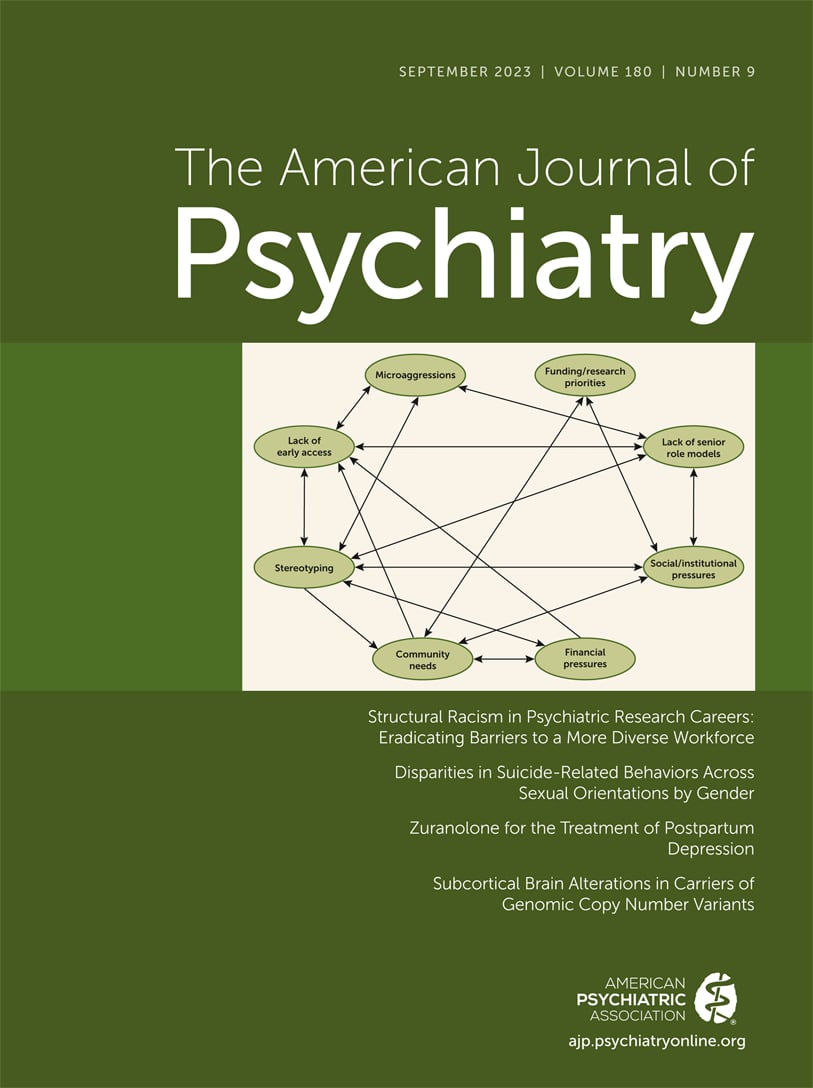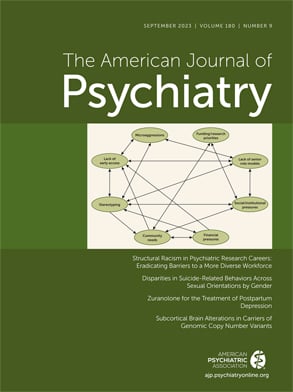Subcortical Brain Alterations in Carriers of Genomic Copy Number Variants
Abstract
Objective:
Methods:
Results:
Conclusions:
| Age (years) | |||||||||||||
|---|---|---|---|---|---|---|---|---|---|---|---|---|---|
| Locus | Start-Stop Coordinates (hg19) (Mb) | Type | nGenes | Gene | Ascertainment (Cohorts) | N | Mean | SD | Range | Sex (M/F) | Diagnoses (ASD/SZ/Other) | IQ Point Loss | Odds Ratio (ASD/SZ) |
| 1q21.1 | chr1, 146.53–147.39 | Del | 7 | CHDIL | Clinical (BC, CDF, EU, SVIP) | 28 | 29 | 18 | 8–73 | 17/11 | 1/0/7 | 15 | 3.2/6.4 |
| Nonclinical (UKB) | 12 | 59 | 7 | 47–68 | 5/7 | 0/1/3 | |||||||
| Dup | Clinical (BC, CDF, EU, SVIP) | 17 | 35 | 17 | 8–65 | 9/8 | 1/0/4 | 25 | 5.3/2.9 | ||||
| Nonclinical (UKB) | 13 | 62 | 6 | 51–72 | 9/4 | ||||||||
| TAR | chr1, 145.39–145.81 | Dup | 15 | RBM8 | Nonclinical (UKB) | 31 | 60 | 8 | 48–74 | 14/17 | 2.4 | ||
| 13q12.12 | chr13, 23.56–24.88 | Dup | 5 | SPATA13 | Nonclinical (UKB) | 21 | 62 | 8 | 50–76 | 11/10 | 0.6 | ||
| 15q11.2 | chr15, 22.81–23.09 | Del | 4 | CYF1P1 | Nonclinical (UKB) | 108 | 65 | 7 | 49–78 | 59/49 | 0/0/2 | 5.7 | 1.3/1.9 |
| Dup | Nonclinical (UKB) | 144 | 64 | 7 | 46–79 | 77/67 | 0/0/6 | 0.9 | 1.8/1 | ||||
| 16p11.2 | chr16, 29.65–30.20 | Del | 27 | KCTD13 | Clinical (BC, CDF, EU, SVIP) | 78 | 17 | 11 | 6–54 | 36/42 | 26 | 14.3/1.1 | |
| Nonclinical (UKB) | 4 | 66 | 3 | 63–70 | 1/3 | ||||||||
| Dup | Clinical (BC, CDF, EU, SVIP) | 68 | 31 | 15 | 8–63 | 29/39 | 10/1/19 | 11 | 10.5/11.7 | ||||
| Nonclinical (UKB) | 7 | 65 | 6 | 53–69 | 3/4 | ||||||||
| 16p13.11 | chr16, 15.51–16.29 | Dup | 6 | NDE1 | Nonclinical (UKB) | 50 | 66 | 6 | 51–78 | 26/24 | 8.7 | 1.5/2 | |
| 22q11.2 | chr22, 19.04–21.47 | Del | 49 | AIFM3 | Clinical (BC, CDF, UCLA) | 68 | 14 | 6 | 6–35 | 33/35 | 8/2/31 | 28.8 | 32.3/23 |
| Dup | Clinical (BC, CDF, UCLA) | 19 | 17 | 13 | 6–45 | 6/13 | 2/0/8 | 8.3 | 2/0.2 | ||||
| Nonclinical (UKB) | 7 | 60 | 11 | 48–80 | 5/2 | 0/0/1 | |||||||
| Control subjects | Clinical (BC, CDF, EU, SVIP, UCLA) | 317 | 26 | 14 | 6–63 | 142/175 | 1/0/23 | ||||||
| Nonclinical (UKB) | 465 | 64 | 7 | 47–80 | 245/220 | ||||||||
Methods
Participants
Clinically Ascertained Groups
Unselected Population Group
MRI Acquisition and Preprocessing
Subcortical Volume and Shape Segmentation
Quality Control
Normative Modeling
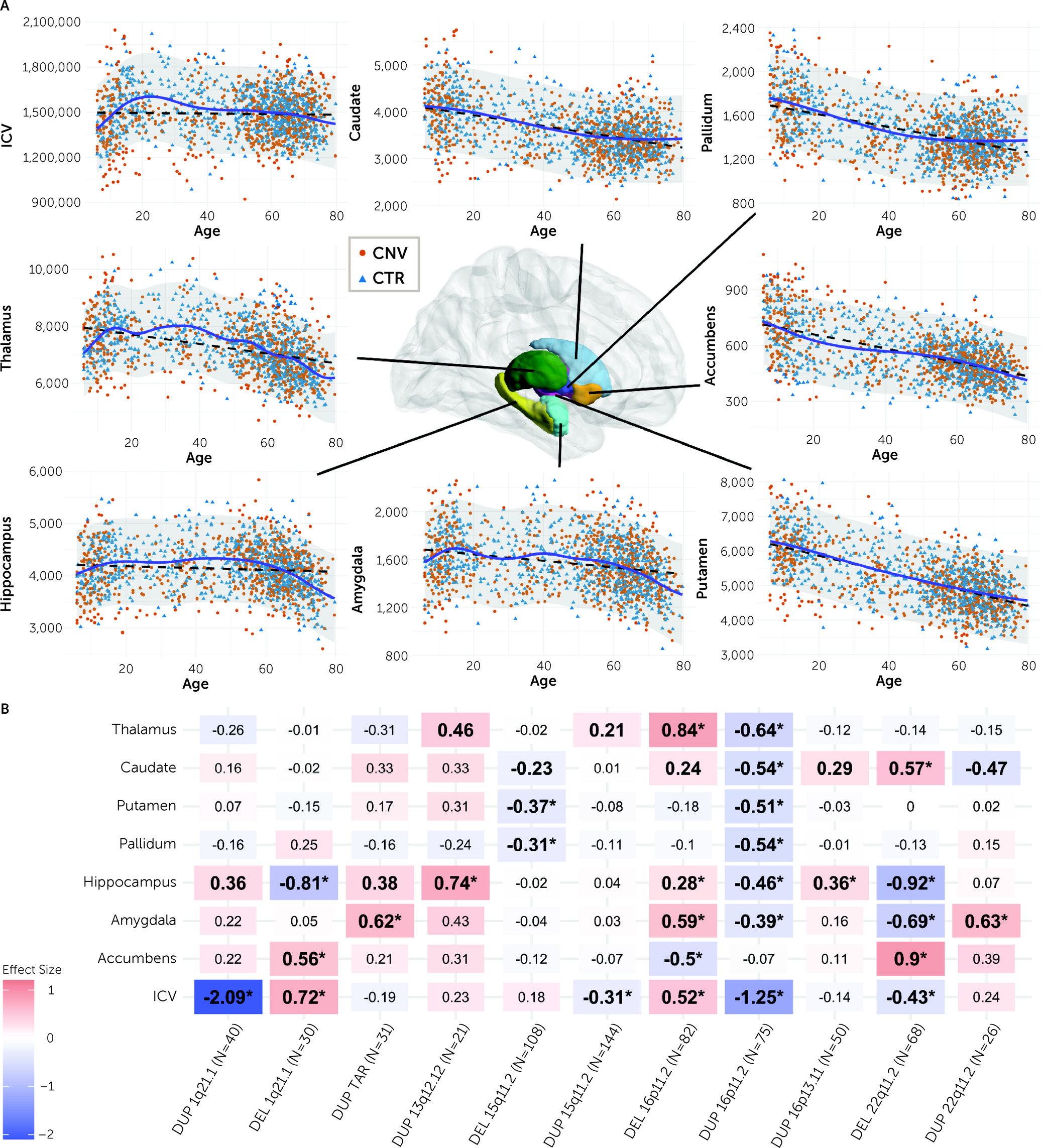
Statistical Analysis
Effect Sizes
Quantifying Shared Variance Across CNVs and NPDs
Results
Effects of CNVs on Subcortical Volumes
Effects of CNVs on Thickness and Local Surface Area
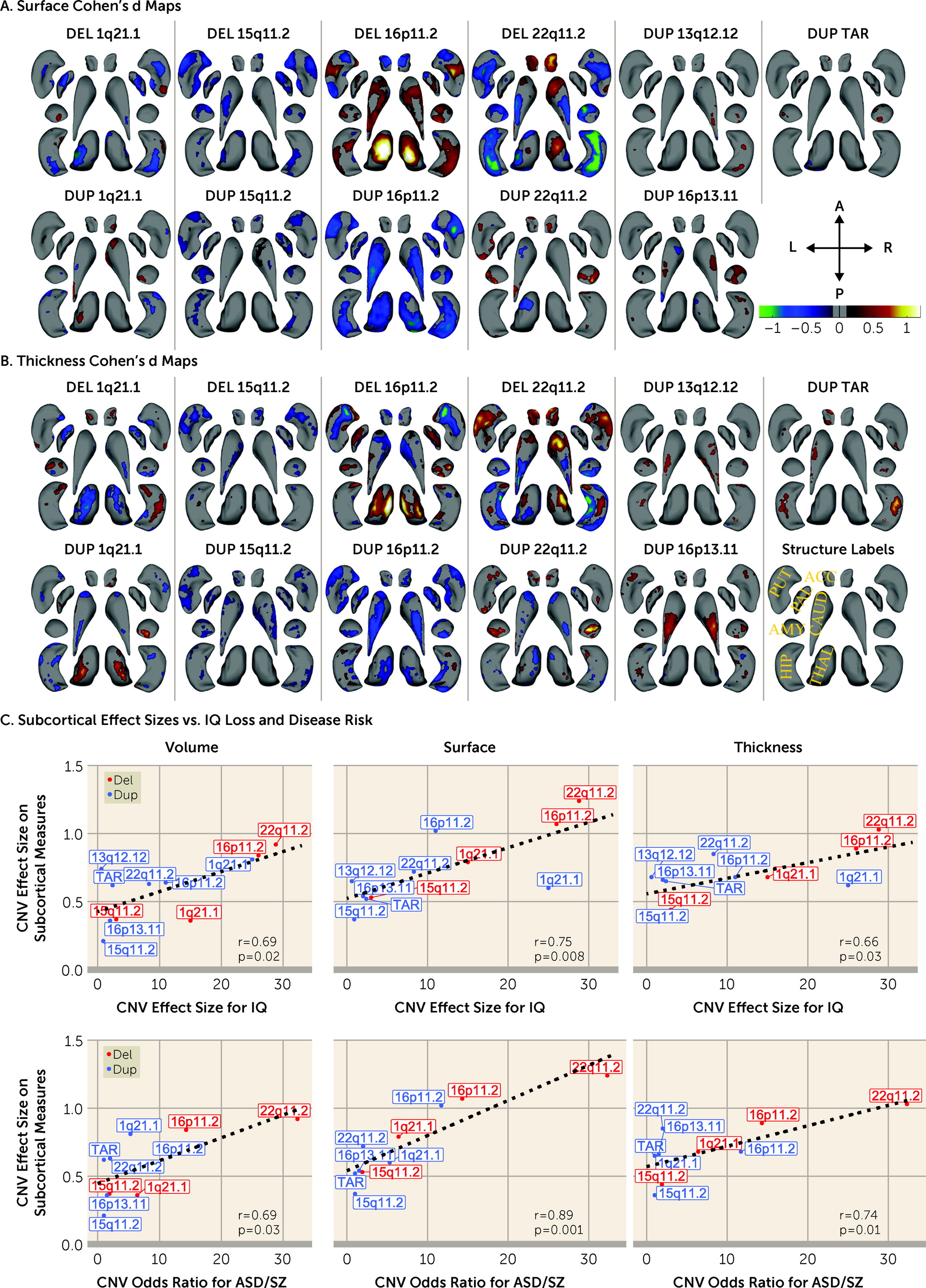
CNV Effect Sizes on Subcortical Volume/Shape, Cognition, and Risk for Disease
Comparing Cohen’s d Profiles of CNVs and NPDs
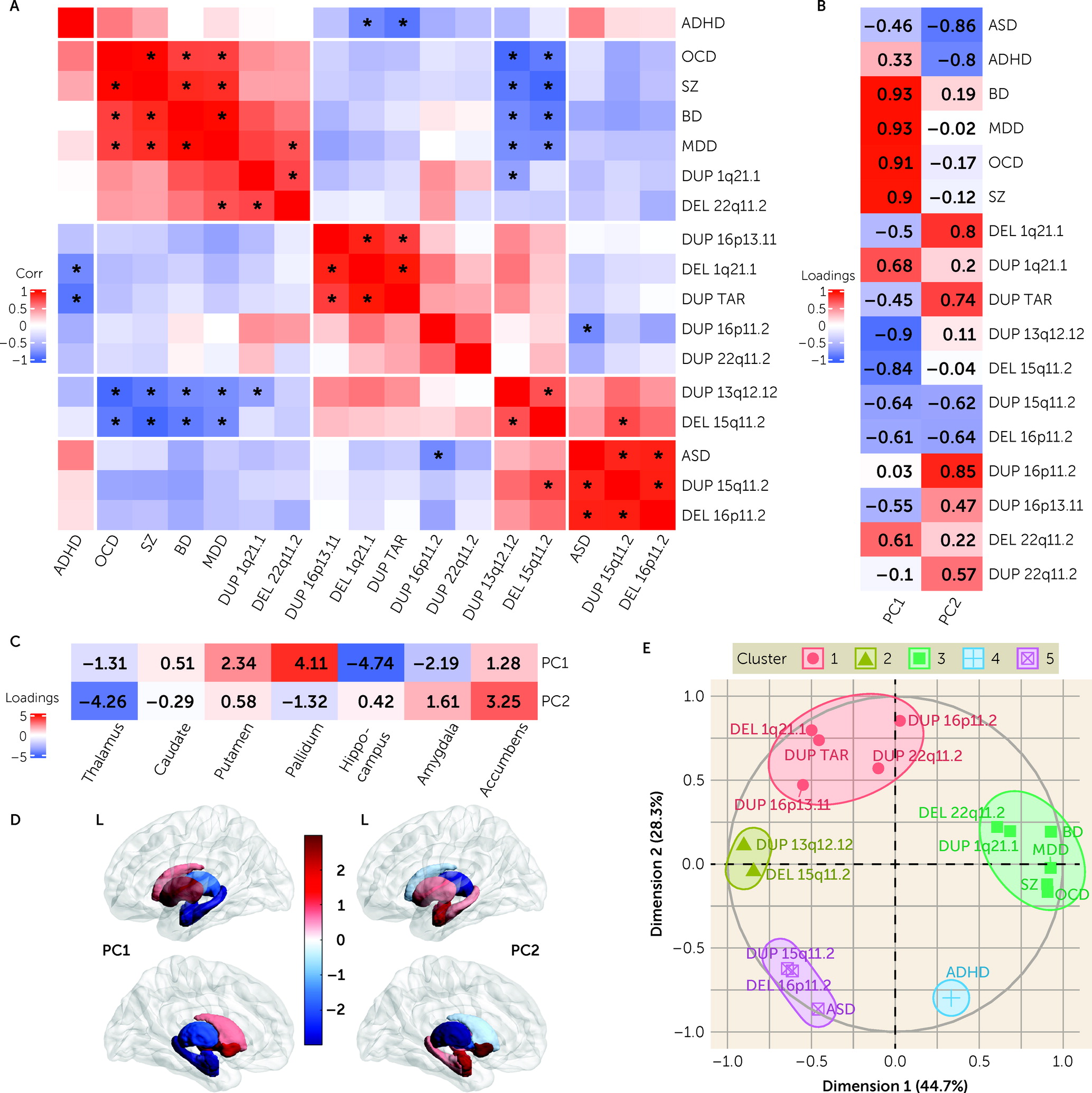
Subcortical Latent Dimensions Across CNVs and NPDs
Latent Dimensions Across Subcortical Shape Metrics of CNVs and NPDs
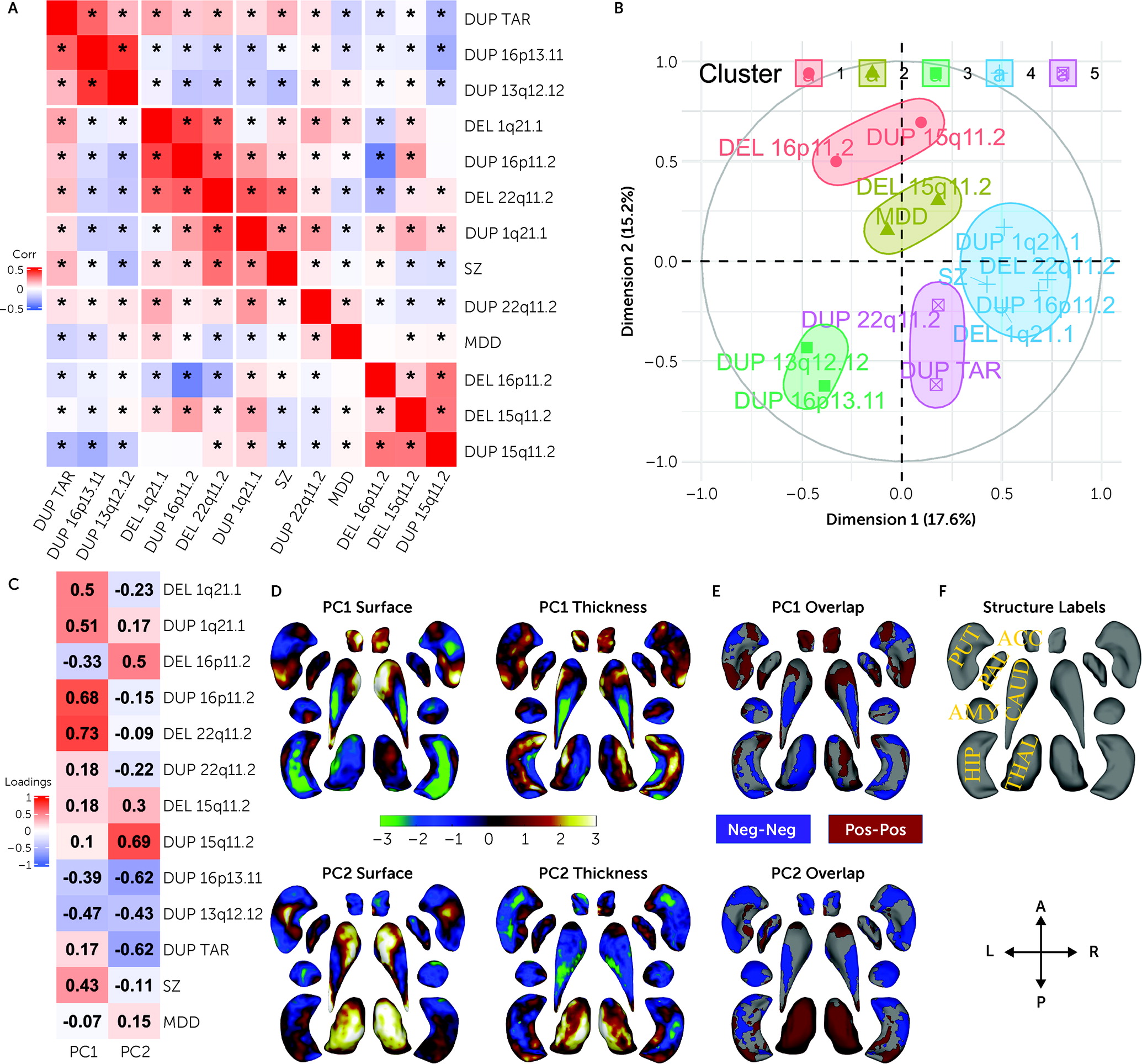
Discussion
Acknowledgments
Footnotes
Supplementary Material
- View/Download
- 5.13 MB
References
Information & Authors
Information
Published In
History
Keywords
Authors
Author Contributions
Competing Interests
Funding Information
Metrics & Citations
Metrics
Citations
Export Citations
If you have the appropriate software installed, you can download article citation data to the citation manager of your choice. Simply select your manager software from the list below and click Download.
For more information or tips please see 'Downloading to a citation manager' in the Help menu.
View Options
View options
PDF/EPUB
View PDF/EPUBLogin options
Already a subscriber? Access your subscription through your login credentials or your institution for full access to this article.
Personal login Institutional Login Open Athens loginNot a subscriber?
PsychiatryOnline subscription options offer access to the DSM-5-TR® library, books, journals, CME, and patient resources. This all-in-one virtual library provides psychiatrists and mental health professionals with key resources for diagnosis, treatment, research, and professional development.
Need more help? PsychiatryOnline Customer Service may be reached by emailing [email protected] or by calling 800-368-5777 (in the U.S.) or 703-907-7322 (outside the U.S.).
